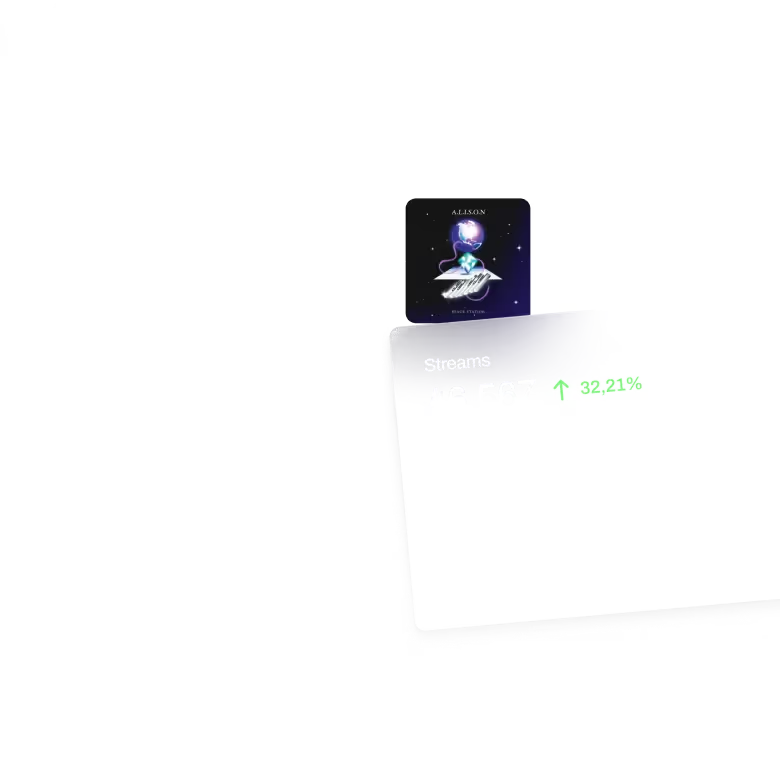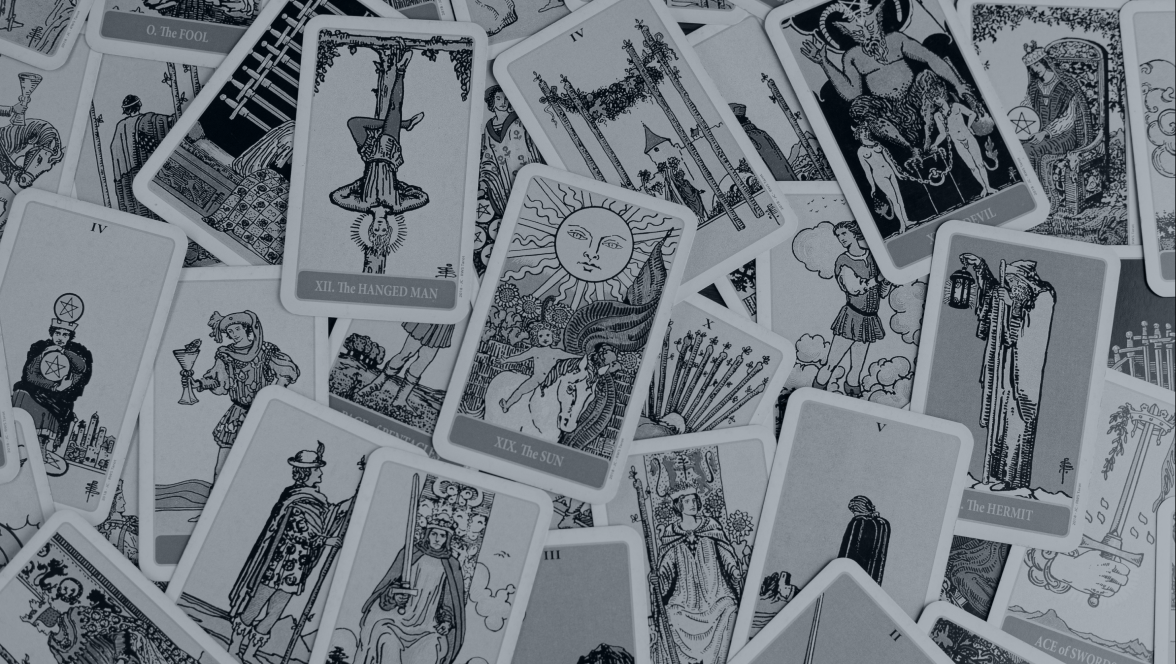
A Guide to Music Terminology

Taking your first steps into the music industry can feel very daunting - not least because there seems to be an entirely new language you need to learn to feel your way around.
From royalties to rights, publishing to playlists, and licensing to labels, we’ve put together the ultimate glossary of music industry jargon - breaking each term down into easy-to-understand definitions that give you the knowledge and confidence you need in the music industry!
The Business Of Music
A&R / Artist & Repertoire
A&R is the industry abbreviation of ‘Artist and Repertoire’. An A&R department at a music label or other music business (like here at Identity Music) is responsible for finding and attracting new artists to the business’ catalogue. A&R ‘reps’ use their industry contacts and knowledge of music trends to ‘discover’ new artists to nurture.
Be careful when talking to A&R reps, particularly from labels or businesses who have very little digital presence. Some A&R reps aren’t what they seem and have a bit of a reputation for scamming or underdelivering on their promises. If they’re asking you for payment in exchange for reviewing your music, run in the opposite direction!
Advance
If you’re speaking to a label (major or independent) about signing with them, the topic of Advances is likely to come up. In the simplest terms, an Advance is an upfront payment to you that is repaid by your future earnings. A label might offer you an Advance as an incentive for signing with them - but it’s important to remember that an Advance is essentially a loan or pre-payment that you will be paying back via your future royalties earnings.
A contract with a major label will also include you giving a percentage of your rights and royalties to the label - your recoupments from an Advance will come out of your share of your royalties, so you could be earning $0 in royalties for a number of months or years, depending on the size of your Advance.
An Advance might be helpful for you and your career in the short-term, but you should bear in mind the long-term commitment.
EPK / Electronic Press Kit
An EPK or Electronic Press Kit is a digital version of a traditional press kit. If your goal is to feature in press articles, book gigs, or attract label attention, having an EPK is important. It’s a promotional tool that’s a collection of things that showcase your music career. An EPK usually includes an artist or band bio, professional photos (e.g. headshots or live event photos), videos, testimonials/reviews, and links to your social media accounts, booking agents, manager, and streaming platforms. Think of it as your musical CV!
Exclusive Agreement
An Exclusive Agreement can refer to a number of things in the music industry. In the context of label agreements, an Exclusive Agreement means you (the artist) are agreeing to work solely with another party (the label) - which means you can’t release music independently, or with another label, for the duration of the term of your agreement. In the context of licensing, an Exclusive Agreement means a producer or creator is giving you the exclusive right to use the beat or track you’re paying them for - meaning they won’t be selling that beat or track to anyone else.
Identity Music’s distribution agreements are never Exclusive, meaning that our artists are able to distribute with other music distributors throughout the duration of their agreement with us.
Independent Artist
Being an Independent Artist means you are self-releasing music without affiliation to any Major Label. While ‘indie’ is a genre of music, being Independent does not mean you’re limited to releasing music in any genre. An Independent Artist can release through an Independent Record Label, but an artist who is releasing through a Major Label is not deemed to be an Independent Artist.
Independent Record Label
Similarly to an Independent Artist, an Independent Record Label is a record label that has no affiliation with a Major Label. Agreements with Independent Record Labels are often more artist-favourable than those with Major Labels and while the support and resources offered by an Independent Label can rarely match those offered by a Major Label, signing with an Independent Label usually means handing over less of your royalties and less ownership and creative control over your music.
Major Label / The Big Three
In contrast to an Independent Record Label, a Major Label is typically one of The Big Three record labels in the music industry: Universal Music Group, Sony Music and Warner Music Group. Each of those Major Labels has significant market share in the music industry, controlling a large percentage of the global music catalogue, and they each have their own distribution and publishing arms too.
Signing a record deal with a Major Label (or any of its smaller subsidiary labels) typically includes the provision of an Advance granted to the artist or band. Record deals usually specify a division of ownership of an artist’s past and future assets, meaning that an artist/band no longer has full control over their catalogue or creative decision-making, as well as typically only being entitled to anywhere between 10% and 20% of royalties earned by your music.
Non-Exclusive Agreement
A Non-Exclusive Agreement can refer to a number of things in the music industry. In the context of a deal with a label or distributor, being Non-Exclusive means the Agreement allows the artist/band to engage with or release music with another label or distributor throughout the duration of the Agreement. In the context of licensing, a Non-Exclusive Agreement or license will mean that the producer or creator of the beat, track or content you are using has the right to allow others to use that same beat, track or content - as opposed to an Exclusive Agreement where you will be the only person with rights to that content.
Identity Music offers non-exclusive distribution agreements, where we don’t require you to distribute your future releases solely with us.
Royalties
Royalties is the umbrella term referring to payments earned by use of your music. Mechanical Royalties are earned when a song is physically reproduced (vinyl, CD, etc) or digitally streamed. Performance Royalties are earned when a song is publicly performed (live, on radio, or TV). Synchronization (Sync) Royalties are earned when a song is used in films, TV shows or video-based advertisements.
For most Independent Artists, Mechanical Royalties via streaming platforms form the majority of their earned revenue.
Music Distribution Terminology
Distributor
A Music Distributor is the bridge between your music and streaming platforms. While some platforms, like SoundCloud, allow you to upload your own music to the platform, most streaming platforms require your music to be uploaded via a third-party music Distributor, like Identity Music. Digital music Distributors deliver your music to global streaming platforms and download platforms.
If you’re working with a Major Label to release your music, the Label will have their own Distributor your music is delivered via. If you’re an Independent Artist or using an Independent Record Label to release your music, it will be delivered via a chosen Distributor.
Some Distributors charge monthly subscription fees for artists to release their music, others charge per-release fees, and others (like here at Identity Music) work on a royalty-share basis with artists and record labels. Consider your needs, read the fine-print carefully, and choose a Distributor who is able to support you to reach your music goals.
DSP / Digital Service Provider
A DSP or Digital Service Provider is a streaming platform or other online platform that allows consumers to access digital audio without the need to download files. The most-used DSP is Spotify, but there are hundreds of streaming services around the world, some of which are genre-specific or location-specific. To see a full list of the DSPs Identity Music Distributes to, click here.
Ingestion
Ingestion, in the context of music distribution, is the process of a track or release being uploaded to a platform. When you upload your track to your Distributor dashboard, your audio file, metadata and artwork are all Ingested into the dashboard. When your Distributor distributes that track, the audio file, metadata and artwork are Ingested by your chosen streaming platforms.
ISRC / International Standard Recording Code
An ISRC is a unique alphanumeric code given to every track. Unlike a UPC, an ISRC is a track-level identifier that is always unique to a single audio track or music video. ISRCs are in the format AA-A00-00-00000 (where A=letter and 0=number) and start with a country code (e.g. US or UK) and include a year code.
An ISRC code is either generated by a Distributor when a track is Ingested into a distribution dashboard or can be generated by an Independent Artist themselves through a national ISRC agency (e.g. PPL (Phonographic Performance Limited) in the UK, RIAA (Recording Industry Association of America) in the US, etc.) or the IFPI (International Federation of the Phonographic Industry - the international ISRC agency).
Metadata
In the music industry, Metadata refers to the descriptive information embedded into a track and/or release. Metadata includes:
- Track Title
- Album, EP or Single Title
- Artist (including Featured Artists and other Collaborators)
- ISRC and UPC
- Licenses
- Publishing and Copyright Information
- Release Date
Your Distributor dashboard will guide you through adding all relevant Metadata to your releases. Accurate Metadata ensures that your track links to the correct streaming profiles, gets categorised into the correct genre (which is very important for discoverability) and your earnings are correctly routed.
Territory
In the music industry, Territory means what it means in most other contexts. A Territory is an area of land controlled or owned by a particular country or person. Unlike a country, which has political independence, defined borders and a recognised government, a Territory is an area claimed or governed by a country, but isn’t necessarily a fully independent or autonomous part of it.
In most cases in the music industry, including in music distribution, Territory and country are used interchangeably to refer to a geographic area - with the exception of in contractual agreements, where geographical location matters.
Track Linking
Track Linking refers to the process of connecting two versions of the same track together, usually to preserve streaming statistics and data. Track Linking can be used when a remastered or re-released version of a track is being distributed and the artist wishes to maintaining stream counts. It can also be used when transferring tracks between Distributors, where both the original Distributor and new Distributor controls a ‘version’ of the same track for a period of time before the original Distributor takes down the track.
Track / Royalties Splits
When working with a second artist, producer or other collaborator on a track, you’re likely to have an agreement in place where each contributor is entitled to a share of the revenue generated by the release. These shares are called Track Splits, where the revenue is split out amongst the relevant contributors. When distributing your tracks, some Distributors allow creation of Track Splits within your distribution dashboard at no extra cost (like we do here at Identity Music) while other Distributors charge extra for this feature or don’t provide it at all.
UPC / Universal Product Code
A UPC or Universal Product Code is a unique identifier for a release. While an ISRC is a unique identifier for a specific track, a UPC covers a whole release (Single, EP or Album). A single track, therefore, should have an ISRC and a UPC, where the ISRC is unique to the track but the UPC can be common across multiple tracks on a release.
Making Music
AI Music
AI Music usually refers to music that has been fully-generated by AI technology - that is, music that has had very little intervention by humans. While there are many AI tools that can contribute to music production, AI Music usually refers to cases where AI has generated a track from scratch based on a prompt provided by a human.
AI in the music industry is a complex and heated topic, where there are people who applaud the improvements AI has made to the creation of music and those who believe AI is threatening human creativity.
At Identity Music, our stance is that AI models should not be allowed to train using licensed content, i.e. music that humans have created but have not given permission for AI models to access, and that we will not distribute any fully AI Music. You can read more about our AI Policy here.
Album
An Album is a collection of Tracks released by an artist or band. Typically, an Album contains 7 or more tracks and has a run-time of 30+ minutes, but this isn’t always the case. Most music platforms have similar requirements of what defines an album, but the usual standard is a minimum of 2 tracks and (usually) a 30+ minute run-time.
Catalogue / Back Catalogue
If you’re an Independent Artist, your Catalogue is the entire collection of your released music. Technically speaking, Catalogue contains tracks that have been released for 18 months or more - but in most contexts using the term Catalogue or Back Catalogue will refer to all existing releases.
Collaborator
In music, a Collaborator is someone who works in partnership with another artist in the creation or production of a track. This could be in the role of songwriter, composer, producer or various other contributions. Collaborators can (and usually should) be credited in metadata and royalty splits should be discussed with all parties involved prior to the track’s release.
Composer
While the term Composer might conjure up images of 18th-century classical instrumentalists composing a 12-minute-long sonata, Composer is still relevant in the music industry today. A Composer is someone who creates musical compositions, including melodies, harmonies, rhythms and dynamics, to build a piece of music. Composers often collaborate with other musicians, such as songwriters, producers or vocalists.
EP / Extended Play
An EP or Extended Play is a release that sits in the middle-ground between a Single and an Album. They typically contain more than one track and fewer than an Album’s worth of tracks, usually up to 8 tracks with a playtime of between 15 and 30 minutes. In most cases, an EP is less ‘cohesive’ than an Album, which usually takes the listener on a start-to-finish musical journey.
Mastering
Mastering is the final stage of music production, where the audio track is polished and optimised for playback across devices and formats. Mastering is a fine-tuning process where every part of the mixed track is adjusted to enhance certain characteristics and create a cohesive listening experience.
Producer
A Producer oversees the recording and production elements of the music creation process. Typically a Producer will make both creative and technical decisions alongside an artist to bring all elements of a track together.
Producers also often create beats or samples for other artists to use after purchasing licenses from the Producer.
Samples
A Sample in music is a part of a recording that is taken and used in another recording. Samples can contain any element of a recording, including vocals, melody or sound effects, and can be any length. Producers often create Samples as standalone recordings for other artists to use in their work, particularly drum beats or melodies.
Single
A Single typically refers to a release that includes a small number of tracks, from 1-3 most often. A Single is the most common type of music release, particularly for artists who are hoping for tracks to gain traction through promotion as the focus of marketing activities is smaller than for an EP or Album.
Waterfall Release
A Waterfall Release is a release strategy whose goal is to build traction and excitement in the run-up to a full EP or Album release. The strategy involves releasing a Single that contains, for example, Track 1, then a Single that contains Track 1 and Track 2, then a Single or EP that contains Track 1, 2 and 3 - and so on, until the full Album is released. It’s a cumulative release that relies on carefully planned distribution to ensure that each newly-released track links back to the original to avoid releasing multiple versions of the same track.
Music Promotion Terminology
Call To Action / CTA
A Call To Action or CTA is exactly what it sounds like: a phrase that asks a listener, reader or viewer to take some kind of action. A CTA is particularly important in music promotion as it encourages a person to move from seeing an ad or a post or a video to actually going to stream your music on another platform.
As an example, you might be running Instagram Ads for your music. If it’s a video ad, you might say ‘Stream now on Spotify’ at the end of your recording, or if it’s a static photo and caption, you might write ‘Stream now on your favourite streaming platform’ in the caption - however you phrase it, the point is that you’re directly asking for the action that your promotion is hoping to achieve.
Fan Link
A Fan Link (or Pre-Save Link) is a custom link generated to allow your fans to easily access your music on their preferred streaming platform. A single link (your Fan Link or Pre-Save Link) directs people to a landing page where they can then click a link to their preferred streaming service. If a Pre-Save Link is generated for your upcoming release, it will allow your fans to pre-save your music and will automatically route fans to your live release on/after release day. A Fan Link can also include an email subscription function for another way to engage with your fans.
Merch / Merchandise
Merchandise, often shortened to Merch, is branded items you can buy from an artist or band. Often this includes things like vinyl records, t-shirts and other clothing items, keyrings, stickers - if it’s branded and sold by the artist or band, it’s Merch.
As an artist, selling Merch can provide another avenue of revenue and an opportunity for fans to engage more deeply with your work. You can find out more about designing and selling Merch here.
Pitch
A Pitch, in relation to releasing music, usually refers to presenting a new release to a playlist editor for the chance of securing a placement. Editorial Playlist Pitching is where your track is pitched, pre-release date, to the content editors at streaming platforms, like Spotify, Apple Music, etc., for consideration in their Editorial Playlists. Editorial Playlists typically have more followers and listeners than Third-Party Playlists but are often more difficult to get placed in due to the level of competition for limited spots.
Some platforms, like Spotify, allow artists to submit their own Pitch via their artist dashboard while others, like Apple Music, only accept pitches from distribution partners (like Identity Music).
For advice on how to write a compelling Pitch, take a look here.
Digital Rights Management
C Line / Copyright Line
The C Line or Copyright Line is used to show who (or which entity) owns the rights to the cover art and written material included in a release and can also be used to claim rights to the underlying musical composition and lyrics. The C Line will always be accompanied by the P Line - while the owners of both parts may be the same, they refer to different rights so will always be specified separately.
Content ID / CID
Content ID, sometimes referred to as CID, is YouTube’s digital rights management platform, where tracks released on YouTube Music are ‘fingerprinted’ by sophisticated technology that is able to identify any usage of your music in other videos or tracks across both YouTube Music and YouTube. YouTube Content ID is a powerful tool that allows you to monetise, track or block usages of your music, so you stay in control of how it’s being used and maximise your royalty earnings.
Facebook Rights Manager / FBRM
Facebook Rights Manager or FBRM is the digital rights management platform that protects music across Facebook and Instagram. Similarly to YouTube Content ID, Facebook Rights Manager fingerprints a distributed track and monitors any usage of that track in videos or posts across Facebook and Instagram. FBRM allows you to monetise or block usage of your music, so you’re earning royalties or restricting unauthorised usage.
P Line / Phonogram Line
The P Line or Phonogram Line on a release specifies the legal ownership of the sound recording itself. While the C Line refers to the cover art and written material, the P Line shows who (or which legal entity) owns the sound recording itself. Often the owners of the Phonogram and Copyright are the same, particularly in the case of independent artists self-releasing music, but they will always be specified separately in a release’s Metadata.
Public Domain
If a track, beat or sample is Public Domain, it is no longer protected by Copyright and can be freely used, modified, distributed or performed with no need to obtain permission or licenses. The specific terms vary between countries, but typically copyrighted music remains under Copyright for 70 years from release date, after which it becomes Public Domain.
Rights Management Platforms
A Rights Management Platform is a music platform that facilitates the monitoring of Copyrighted music through some form of digital fingerprinting to identify recurrences of tracks across a platform. In music, the Rights Management Platforms are (currently) Facebook and Instagram (through Facebook Rights Manager), YouTube and YouTube Music (through YouTube Content ID), TikTok, and SoundCloud (through SoundDeck).
Rights Management Platforms have requirements as to what music can be distributed to the platform, including that the exclusive rights to the entire track must be owned by the releasing artist. Samples and beats that are licensed from Producers non-exclusively (which means other artists can use the same samples/beats) cannot be tracked through Rights Management Platforms as the sample will conflict with other non-exclusive owners of the sample. Each platform also has specific requirements that differ platform-to-platform, but as an example: tracks classified as ambient cannot be distributed to Facebook Rights Manager.
Whitelisting / Safelisting
Whitelisting or Safelisting is the process of adding a channel or creator to an approved list on Rights Management Platforms, allowing the use of your music in their creations. This can be done on YouTube for channels that are posting things like reaction videos and can be done on TikTok, Facebook and Instagram for creators who an artist has partnered with for social media campaigns. By adding a channel or creator account to your Safelist, Rights Management Platforms will ignore any usage of your music identified in content posted by that user, so that you’re not claiming royalties or unintentionally blocking usage of something you’ve already approved.
Your Distributor should be informed of any partnerships you have with other accounts prior to the Distribution of your music to avoid any conflicts being picked up by Rights Management Platforms upon release.
Streaming
Algorithmic Playlists
Algorithmic Playlists are playlists that are curated by a streaming platform’s algorithm, not by a platform Editor or a Third-Party. Algorithmic Playlists are particularly well-developed on Spotify, where Spotify’s algorithm looks at a huge range of data about a user’s listening behaviours (including liked artists, songs skipped, other playlists listened to) and uses that data to curate an Algorithmic Playlist of songs Spotify thinks the user will enjoy.
Artificial Streaming
Artificial Streaming is streams of your music that aren’t ‘real’. A legitimate stream is where an actual human being streams your music. An Artificial Stream is where a computer programme (bot) or other automated process streams your music.
Spotify defines an Artificial Stream as:
“A stream that doesn’t reflect genuine user listening intent, including any instance of attempting to manipulate streaming services like Spotify by using automated processes (like bots or scripts).”
Artificial Streaming is usually the result of paying for streams or playlist features. Any service that offers you streams or playlist features in exchange for money is likely using illegitimate methods of streaming your music, regardless of how adamantly they claim to be legitimate.
Editorial Playlists
Editorial Playlists are playlists that have been curated by Editors at streaming platforms. Most global streaming platforms have some Editorial Playlists, including Spotify, Apple Music, Amazon Music and Deezer. Artists and bands can get their music placed in Editorial Playlists by Pitching music before release. Some platforms, like Spotify For Artists, allow artists or bands to self-pitch their tracks while others, like Apple Music, only accept Pitches from selected partners, like Distributors.
Editorial Playlists are usually highly-followed and receive a lot of user plays, but placement in an Editorial Playlist does not necessarily translate into follows, saves or repeat-plays of an artist’s Catalogue.
Spotify Discovery Mode
Spotify Discovery Mode is a feature that allows eligible artists to ask Spotify to place their tracks or releases as a priority in algorithmic placements, including Algorithmic Playlists, autoplay, artist ‘Radio’ playlists, etc. – meaning releases stand a higher chance of being ‘discovered’ by new listeners. It’s important to note that opting in for Discovery Mode does not mean releases will appear in more algorithmic placements. Discovery Mode boosts where releases appear in those listings (i.e. if a release is opted into Discovery Mode it might be track 3 on an artist radio rather than track 20, meaning the track is more likely to be played by a listener) but it does not put the trackinto algorithm-determined contexts that you wouldn’t have already featured in.
Eligibility for Spotify Discovery Mode is based on 2 factors: the track must exceed the monetisation threshold of 1,000 streams in a 12 month period and the track must have received a qualifying number of algorithmic streams organically. Streams in Discovery Mode placements are subject to a 30% cut of revenue by Spotify.
You can find out more about Spotify Discovery Mode here.
Spotify Preferred Provider
Being a Spotify Preferred Provider means that a Distributor has proven that the content they Distribute to Spotify meets certain quality criteria. The criteria include ensuring that high-quality audio files are delivered, correct and thorough metadata is included with every release, and only licensed, legitimate music is distributed. Distributors who are in the Spotify Preferred Provider programme are required to maintain high standards and are reviewed regularly to ensure compliance.
Identity Music is a Spotify Platinum Preferred Provider.
Third-Party Playlists
Third-Party Playlists are playlists curated by users that aren’t platform editors. These playlists are typically followed by fewer users than Editorial Playlists - but there are some Third-Party Playlists that perform extremely well, particularly on Spotify. Third-Party Playlists might be made by individual listeners or by brands, record labels or other companies. For example, Netflix has a number of Third-Party Playlists created for specific Netflix shows that contain music from the shows.



.png)

